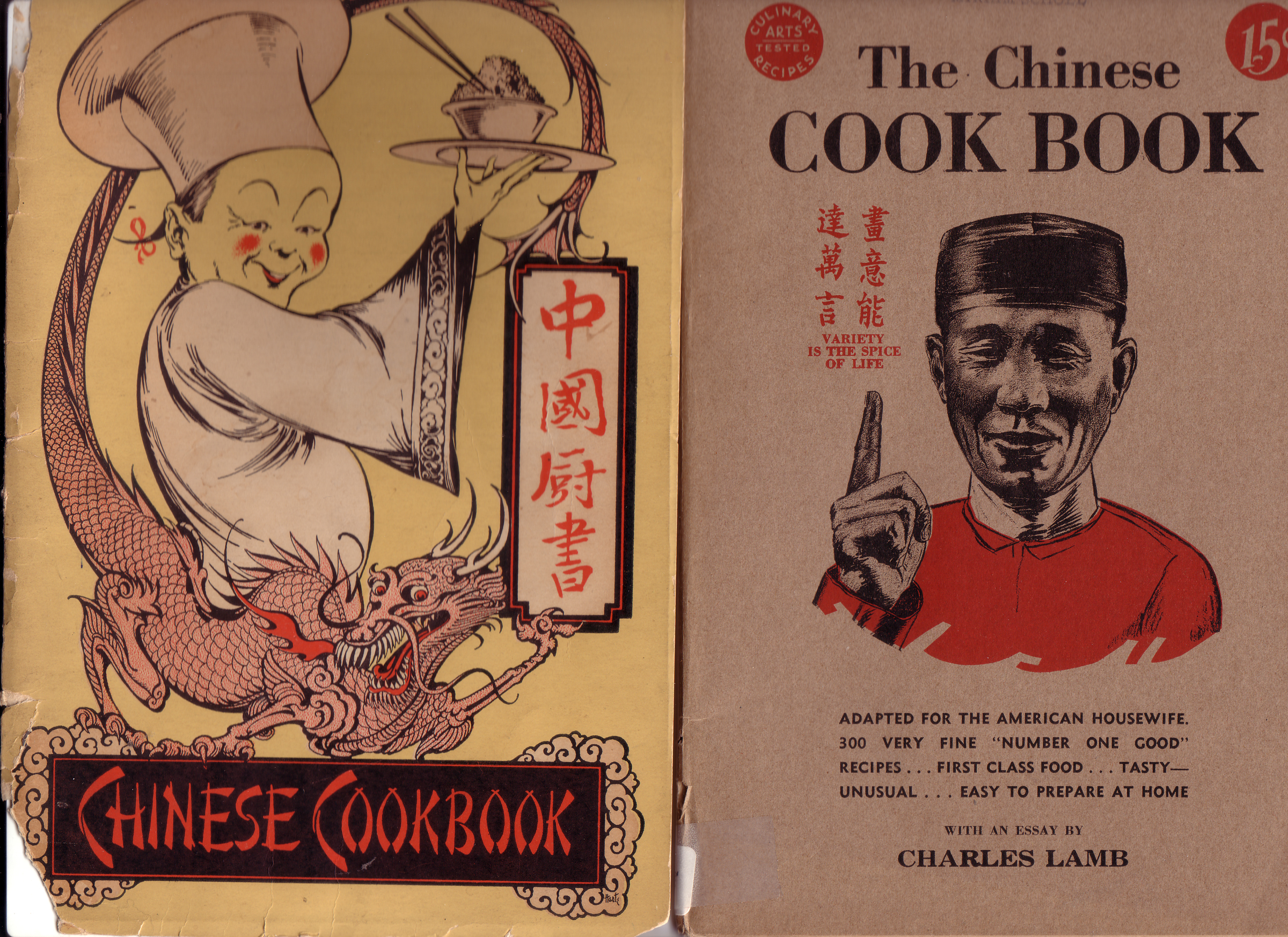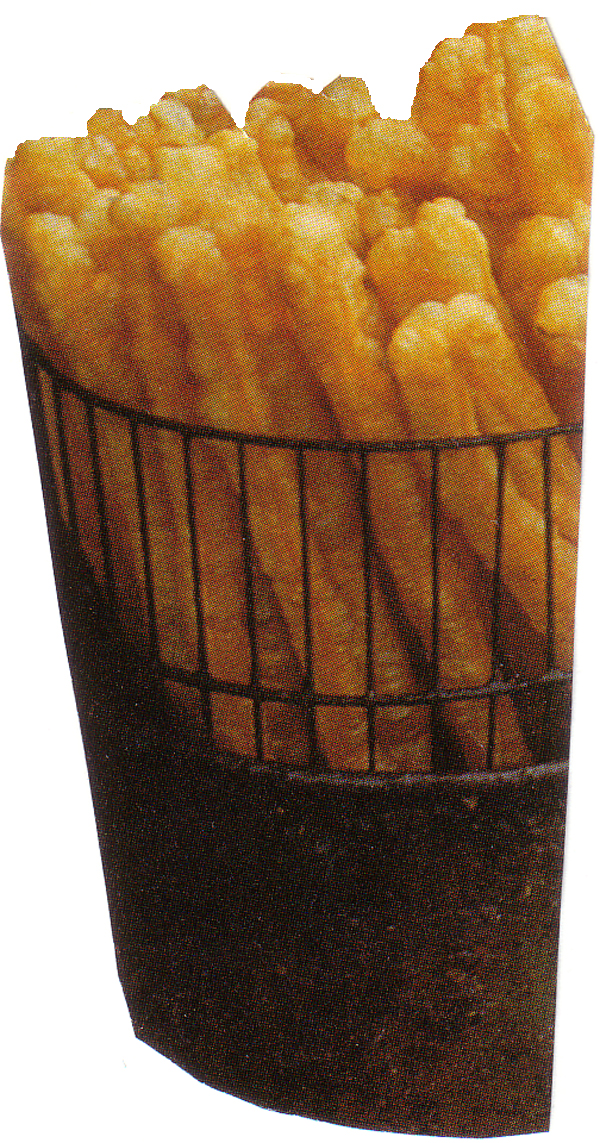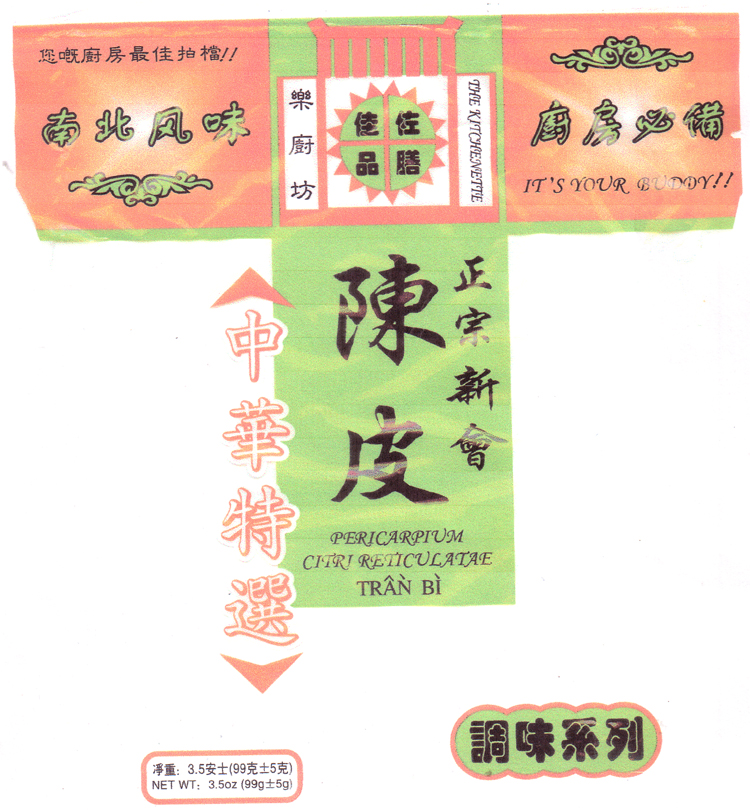
| What is Flavor and Fortune? |
| How do I subscribe? |
| How do I get past issues? |
| How do I advertise? |
| How do I contact the editor? |
Read 7002351 times
Connect me to:
| Home |
| Articles |
| Book reviews |
| Letters to the Editor |
| Newmans News and Notes |
| Recipes |
| Restaurant reviews |
| Article Index (all years, slow) |
| List of Article Years |
| Article Index (2024) |
| Article Index (last 2 years) |
| Things others say |
| Related Links |
| Log In... |
| Authors |
| Categories & Topics |
TOPICS INCLUDE: Boar's head mushrooms; Raw fish recipe; Crullers; Frozen doufu; Tangerine peel; Silkworms; Popular restaurant dish; Top 100 awards; Statistics; Fujianese cookbook; Olympic emblem
| by Jacqueline M. Newman |
Letters to the Editor
Fall Volume: 2008 Issue: 15(3) page(s): 6, 7, 8, and 13
From STEVE via e-mail:
The current issue of Flavor and Fortune just arrived. After a brief look just to get the flavor of it, I feel impelled to write and express my admiration for the whole thing, the look and feel, the tone, the graphics, the letters to the editor, the restaurant reviews, the knowledge with which you infuse into it, you name it; even the occasional references to your husband. I can see why so many people enjoy it.
STEVE: Many thanks to you and others, their thoughts not printed here, for all the kind words. As most know, everyone associated with this magazine works pro bono. For them, and yours truly, it is a labor of love that appreciates appreciation.
From CLAUDE via e-mail:
Have asked quite a few folks about Boar's Head Mushrooms. Are they same as those called Monkey Head Mushrooms? Can you share something about them?
CLAUDE: Yes, they are called by the two names you mentioned, also called Lion's Mane, Old Man's Beard, Satyr's Beard, Pom Pom mushrooms, also Mountain Priest Mushrooms. Once botanically known as Hydnum erinaceum, now they are more currently and correctly called Hericium erinaceus. Many report that they taste like lobster when cooked. We have never had that perception but do know they get bitter with age. Do use them when white or light yellow. Chinese medicinal practitioners tout them as good for the five internal organs and for digestion. These same practitioners write they inhibit cancer and are recommended for all types of ulcers, and for those suffering with gastritis. This magazine did discuss them and three other mushrooms in Volume 8(2) on pages 19-22 and 30. The articles in that volume are currently in preparation for our website; only a few copies remain for sale. Another article about others, correctly called fungi, is in preparation.
From JACK and CLEO via e-mail:
Some time ago you wrote about the Chinese eating raw fish including some as sashimi. Are there any recipes for this in your cookbook collection? When we tell this to friends, they do not believe us. A recipe would be a great convincer.
JACK and CLEO: It is hard to convince those whose beliefs are otherwise. We suggest you show them Volume 10 (1) on pages 29 and 35 for that discussion of the origins of sushi and kimchi. As to a recipe for proof, will one in a 1936 Chinese cookery book do?  There is one in The Chinese Cook Book by Au Man Sing on page 29. That book has been reprinted many times, first in 1932, last time to our knowledge by the Culinary Arts Press (Reading PA) in 1975. The 1936 edition, yet to be turned over to the Special Collections at Stony Brook University's library, sits on my desk. Two early covers are reprinted above and below this letter. The paragraph and recipe name follows, it says that "the Chinese have long known one of the most delicious ways to eat fish is raw. It is not only pleasant but this combination is a savory delight." For those unfamiliar with the fish in the recipe, it is a member of the Jack family of fish and is Hawaii's most popular game fish; one with scales. One a nice size runs ten to fifty pounds but many weigh more. African pompano and black or white trevally are related fish, and we are told that sportsman love them because they put up a good fight. The Au Man Sing 1936 recipe, as printed, follows the letters.
There is one in The Chinese Cook Book by Au Man Sing on page 29. That book has been reprinted many times, first in 1932, last time to our knowledge by the Culinary Arts Press (Reading PA) in 1975. The 1936 edition, yet to be turned over to the Special Collections at Stony Brook University's library, sits on my desk. Two early covers are reprinted above and below this letter. The paragraph and recipe name follows, it says that "the Chinese have long known one of the most delicious ways to eat fish is raw. It is not only pleasant but this combination is a savory delight." For those unfamiliar with the fish in the recipe, it is a member of the Jack family of fish and is Hawaii's most popular game fish; one with scales. One a nice size runs ten to fifty pounds but many weigh more. African pompano and black or white trevally are related fish, and we are told that sportsman love them because they put up a good fight. The Au Man Sing 1936 recipe, as printed, follows the letters.
 From ERINN via e-mail:
From ERINN via e-mail:
Some time back you wrote about Chinese crullers. Went to Seattle's Chinatown and no one there knows what you are talking about. Can you either write the Chinese for us or print a picture I can take with me on my next visit to a Chinatown?
ERINN: A picture is worth a thousand words. Here are some fresh ones out of oil that were taken on a street in Shanghai in the early 1980's.
From SUSAN via e-mail:
After freezing dofu, are there any special recipes for it?
SUSAN: Here is a simple recipe, but use your imagination and make others. The one below is rewritten from a 1939 Beijing English-language cookbook written by Mary Sia, and written as was the original.
 From HARRY via e-mail:
From HARRY via e-mail:
I could not locate tangerine peel in my small Chinese market. Can you suggest a place, and tell me what the packaging looks like, maybe it is there and I am missing it?
HARRY: Botanically known as Pericarpium citri reticulatae, the one we just purchased came in a cellophane envelope and the product within is dark brown. Here is a picture of one wrapping, show that to the market manager; they probably can order it.
From BARB via e-mail:
Please tell us more about the silkworms Harley Spiller are and wrote about in a recent volume.
BARB: There are two main provinces in China where silkworms are raised: Jiangsu and Zhejiang. There, many families raise them when barley turns yellow and mulberry leaves are green. Silk worms are difficult to raise. One pound of them are extracted from six pounds of the cocoons. Silkworms start to spin silk after they rest for a month, are said to be tender and delicate, get diseases easily, and when they do they spin no silk. There are many tales and taboos about these critters. One relating to food is that a woman of the house of a sericulturalist (one who raises silk worms) goes to a monastery on the day of Qing Ming Festival to pray for a good harvest. That night she prepares a large delicious dinner and the family gathers to eat and toast their upcoming success. They consume liquor and offer wishes for their silkworms.
From LOUIS via e-mail:
Is it true that Beef with Broccoli is the most popular dish ordered in a Chinese restaurant. If so, can you give us one?
LOUIS: If you mean most popular in Chinese restaurants in the United States, there are probably as many recipes as there are Chinese restaurants. Chinese Restaurant News reports there are more than forty-three thousand Chinese restaurants and do advise how many in each state. From the smallest number (Puerto Rico has two) to the largest (California has more than seven thousand of them), and to your state, Connecticut, with six hundred forty Chinese restaurants.
 From G & P via snail mail from Pennsylvania:
From G & P via snail mail from Pennsylvania:
While visiting our daughter we stopped for lunch at China Dynasty at 351 Northhampton Road in Amherst MA; phone (413) 256-8800. Imagine our surprise when we spotted a plaque on the wall announcing that the restaurant was named among the 100 best by Flavor and Fortune. My husband ordered egg foo yung, his favorite, and declared the dish the best foo he had ever tasted. It was amazing to find this confirmation of an outstanding restaurant and a reminder of a favorite magazine so far away from home.
P & G: We are pleased you were delighted. However, for the record, Chinese Restaurant News (CRN), awards plaques to the Top 100 Chinese Restaurants in the US, and has for four years. The one you ate at was a winner in 2004, and at that time, there was a Judges Committee and your editor was one of its members. However, we judges did not visit the eateries, we only helped design rules and points for evaluating them. We did look over the selected winners but did not vote for any restaurants. Our role has changed, as has the way and number of awards given out beginning with this year. CRN hired an organization that uses mystery diners. They reported to the mystery diner organization who in turn reports to CRN. Using a controlled system, they assure entries and food are as declared by the applications.
From FRANK via e-mail:
Thank you for the statistics of items Flavor and Fortune has published. Hope you not only keep that up yearly, and also provide other numeric information pertaining to Chinese restaurants, food, and other related issues.
FRANK: Here are some answers, numbered for ease of reading.
1) A recent report about the frequency of eating various ethnic cuisines in the United States indicates eighteen percent ate Cantonese food less often while twenty-five percent did so more often. Only Italian and Mexican cuisines were eaten more often (thirty-one and thirty percent, respectively).
2) One-quarter of foreign-born in the United States are from Asia; New York City reports Queens an immigrant hub. The press says two-thirds of Asians there can not vote.
3) Median wages of all Chinese in the United States is $34,000. Those coming from Taiwan have a median wage of $50,000. One reason given, may be education, thirty-eight percent of all Chinese in the United States have a Bachelor's degree while seventy-three percent of those from Taiwan do.
4) Of those who eat cereal and milk for breakfast, last year they spent forty-four cents on these breakfast foods, this year they are spending five cents more, and next year predictions are they will spend another twelve cents. Reasons given include China's economic boom, a growing biofuel industry, and a weak US dollar.
5) When eating Chinese food when dining out in the United States, a Harris poll reports that among all Americans thirteen percent of those sixty-two and older do so. Nineteen percent of those forty-three to sixty-one do so, as do eighteen percent of those eighteen to thirty. Only twelve percent of the thirty-one to forty-two year old folk in the United States eat Chinese food when dining out.
From HEATHER via e-mail:
Need your help with two items: Where does one purchase the Fujianese cookbook touted on page 27 in the last issue? It was not in the Table of Contents, nor on that page, nor anywhere else. And, does it have a Glutinous rice recipe I recall eating at my Chinese neighbor's home; they are from Xiamen.
HEATHER: We apologize on both counts. The book is published by Hippocrene Books and available from them at 171 Madison Avenue, New York NY 10016 or got to www.hippocrenebooks.com You can call them at (212) 685-4371 or fax them at (212) 779-9338. As to the recipe you described, perhaps the one at the end of these letters will taste like it.
From MARY via e-mail:
Can you advise if Chinese take-out is the most popular of that genre of eating?
MARY: To the best of our knowledge, reading the results of the Technomic Survey, an Italian item is tops, though some say pizza is not really Italian as served in Italy. Second, is Chinese take-out food, though certainly not the way most Chinese food is made in China. In 2007, more than half of those using take-out, fifty-three percent to be exact, ordered pizza while thirty-seven percent ordered Chinese take-out. Burgers and other sandwiches followed with thirty-five percent ordering them. These numbers are higher than those reported two years earlier.
 From EDDY via e-mail:
From EDDY via e-mail:
Is the emblem of the upcoming Olympics in China related to Chinese food?
EDDY: Though Haiboa, as he is called, looks well fed he is not food-related. His picture is on this page and is the only logo we found.
| Raw Fish--circa 1936 |
|---|
| Frozen Bean Curd and Sprouts--circa 1939 |
|---|
| Beef with Broccoli |
|---|
1 Tablespoon vegetable oil 6 ounces sirloin steak, cut into thin slices, then very thin strips 1 pound broccoli, leaves discarded, large stems reserved for another use, and the flowerettes cut into one to two-inch pieces 1 teaspoon sugar 1 Tablespoon oyster sauce 1 teaspoon soy jam (also called soy paste) 1 Tablespoon chicken broth 1 teaspoon sesame oil Preparation: 1. Heat wok or fry pan, then add oil, and then the strips of meat. Stir-fry them for one minute, then remove to a small bowl. 2. In a small pot, cover and cook broccoli pieces in one-quarter cup boiling water for five minutes, drain, and set aside. 3. Reheat wok, then mix sugar, oyster sauce, soy jam, chicken broth, and sesame oil, return beef to the wok, in half minute, add the sugar and oyster sauce mixture, stir-fry for one minute, add broccoli and stir-fry another minute, then serve. |
| Fujianese Rice |
|---|
3 Tablespoons vegetable oil 6 cups glutinous rice, soaked in cold water overnight 1 cup raw or roasted peanuts, boiled for half an hour, paper peels removed and discarded 10 dried Chinese mushrooms, soaked in one cup of warm water for half an hour, then stems removed and discarded 2 Tablespoons dry shrimp, soaked in warm water for one hour, then minced 4 scallions, minced 1 pound pork, slivered 1 Tablespoon thin soy sauce 1 bunch fresh coriander, minced 3 slices ginger, fresh or pickled, and minced Preparation: 1. Heat a wok or large Dutch oven, then add oil, then the rice, and stir-fry it for three minutes, then add the peanuts, and stir fry another two minutes until the rice is lightly golden. Remove and do not wash the wok. 2. Prepare a steamer with lots of boiling water, its basket lined with a double piece of pre-moistened cheesecloth on it. Spread the rice evenly on it, and steam for one hour. Transfer the rice to a serving bowl. 3. In the meantime, coarsely mince the mushroom caps, then stir-fry them in the wok for one minute, add the soaked dried shrimp, and the scallion slivers and stir-fry another minute, then add the slivers of pork and stir-fry two minutes more before adding the soy sauce. 4. Put half of this mixture over the cooked rice and peanut mixture and stir lightly. Mix the other half with the minced coriander and the ginger, and put on top of the rice mixture. Then serve. |

Copyright © 1994-2024 by ISACC, all rights reserved
Address
3 Jefferson Ferry Drive
S. Setauket NY 11720